There’s no denying that Forza Horizon 5 is an insanely pretty game. In addition to the gorgeous gameplay clips that have been released, no doubt you’ve also seen the high fidelity screenshots from not only the dev team, but also from users. How exactly is the average Joe able to get such crisp, clean shots using the Forza Horizon 5 photo mode?
This guide will help you learn how to frame, structure, and experiment with Forza Horizon 5‘s in-game camera so that you too can bring out your inner shutterbug. But, quick disclaimer, I personally don’t consider myself to be an “expert” in this field. I’m just a guy that’s somehow managed to take nearly a thousand photos in the game in just a week. Thus, this guide serves as a look at what goes into my thought process when I’m behind the digital lens.
Breaking down the camera settings
Forza Horizon 5‘s photo mode is setup pretty much like a typical real-life camera. It also happens to use the same terminology for all of the different settings, like a real camera would. The thing is, it doesn’t actually explain what all the different options are. Again, I’m no expert, but the following descriptions are the gist of how each option works and what changes it makes to a photo:
- Shutter Speed – This determines how many frames the camera is capturing per second. A lower value is better for slow/stationary moments; vice versa for high-speed/high-action moments. Finding the right balance will help to better keep your main subject in focus (that is, the object you’re really taking a picture of).
- Focus Mode – There are two of them. Tracking is for capturing the background and subject at high speed. Panning is better suited for blurring the background at high speed. This value doesn’t matter much at low speed, and not at all when stationary.
- Focus – Is basically responsible for the clarity of the image, particularly as it relates to the subject. You press the “X” button on your Xbox controller to select what/where you want the camera to truly focus. You can zoom in close and press it to focus on a specific area (e.g. a car’s light, or wheel) or zoom out to make it focus on a full object (e.g. the entire car itself). When you focus on an area or object, that makes it the foreground of the picture. Thus, the remaining parts of the image are then considered to be the background.
- Exposure – Controls the amount of light being allowed into the camera lens. High exposure results in a lot of light; not great in bright conditions. Low exposure results in a very dark look. Best to leave at 50% in the vast majority of situations.
- Aperture – Ties into the Focus value to control the level of clarity. Lower aperture allows for very soft blurring of the background (again, anything that’s out of focus). Higher aperture will greatly intensify the blurring effect; not really needed for most situations. Strike a good balance between the Focus and Aperture values; they often don’t need to be high at all — not even as high as 50%.
- Bokeh Shape – “Bokeh” refers to the sparkle/glitter effect that a camera creates when with out-of-focus pixels. Altering the shape of this effect gives a slightly different look to the blurred parts of the picture; it’s especially useful in conditions with a lot of light in the background (i.e. car lights, street lights, signage, etc.)
- Sampling – Prioritizes speed over image image quality or vice versa. You can often leave it on “Quality” mode, but play with it along with the other settings if something seems off.
- Contrast, Color, and Brightness – The most recognizable options! Contrast controls the level of dark and light areas. Higher contrast levels will make shadows extremely dark, and lower contrast levels will blow out lighter areas. Color allows you to make the image more vibrant on the higher end, more “natural” towards the middle, or desaturated if you go low. Brightness controls the white values in the photo; too bright will look washed out, but too low of a brightness level will make the image look very dark.
- Sepia – Adds a reddish/orangeish/yellowish hue to the photo. You likely won’t ever use this. But, who am I to judge?
- Vignette – Adds a dark circular overlay around the edges of the photo. Creates a very dramatic, intense shot when used correctly. Best in close-up shots with good lighting conditions.
- Temperature – Makes the image “cooler” when the value is low (a blueish hue), or “warmer” when the value is high (a reddish/orangish hue).
How to best use the camera settings
Right from the jump, I’ll be honest: some photos will require you to fiddle with the settings in a unique way. Again, Forza Horizon 5’s camera system works very similar to that of a real life camera. Thus, a lot of the same rules and techniques apply.
Play with the settings
Since different scenes will call for slightly different settings values, make small incremental changes mostly to the Focus, Aperture and Shutter Speed to see what best compliments each specific shot. But, there are certain consistent values that will give you a specific effect. If you want your background to always look blurred, then crank up the aperture and reduce the shutter speed. If you want everything to remain in focus at high speed, almost as if it were frozen time, then turn the shutter speed way up and reduce the aperture. But, again, play with the settings from time to time to see what suits each shot.
Use the world around you
Real photographers don’t just pay attention to the thing they’re taking a photo of, they also mind their surroundings. If you’re creative enough, you can turn a seemingly minor background detail like a tree or scenery object into a really cool looking prop.
Frame your shot by getting your car into a good position when possible. For example, don’t just always take a picture on the road. Maybe there’s a field nearby? Why not park next to the field, or in the field? Or, what if there’s a group of trees with space in the middle for you to park the car? Try placing it there, and then taking a picture from behind one of the trees, using the others as a cool props, along with the background scenery. Here are some examples of my own:
In this shot, notice how the camera is low to the ground, and pulled away a bit from the GMC Jimmy. The camera is at the base of the trunk of a palm tree, and there’s three other palms surrounding the car. There are also good scenery elements in the background: the chairs and umbrellas, along with the brief hint of the ocean and the mountains in the distance, all dressed nicely with the glow of the sunset off to the left. I didn’t have to do much; I just parked the car, and played with the scene until everything looked lined up and pretty.
Here’s another example with a Supra parked in the middle of a flower field. Ignoring the crushed flowers underneath the tires, the glow of the sun creates some nice drama and contrast to the beautiful orange petals. They also happen to match the yellow-gold paintjob of the car itself, and they all contrast the blue sky. The camera is placed low at the cars fender, but zoomed in to only capture half of the car, cutting precisely off at the middle. That way, the car and flowers share a balanced amount of space.
It should also go without saying that Forza Horizon 5 has a lot of very detailed effects like varying times of day, weather phenomenon and different scenes, including its many different locations and biomes. Drive around, and look for cool spots to take pictures.
Try the jungle during an intense rainstorm; there’s a lot of rain pouring through the thick canopy. Or, what about a nice road after a rainstorm has passed with the sun still visible? The reflections are exceptionally beautiful. Then there’s the beach at either sunrise or sunset; extremely vivid views of the sun transitioning over the horizon with an unobstructed view of the sky. No matter the situation, always be mindful of things like the amount of light, shadows, etc. An image should never be too bright, or too dark. Even spinning the camera around to the side of the car facing the light can really make or break a shot.
Zoom in, zoom out, find angles and be creative
As mentioned earlier, zooming in and out will give you a dramatically different scene. Zooming in close and tight will create very dramatic shots, but zooming out allows for beautiful panoramas. Play with the scene to see what level of zoom best suits a situation, along with tilting the camera left, right, up and down to see what you get out of it; you can even capture multiple great shots out of the same situation at different zoom levels and angles. Here’s an example of that:
For this series of shots, I simply moved the camera around and played with the zoom all in the same instance and managed to get six different looking shots out of it. I didn’t alter the settings from a shot-to-shot basis, either. Thankfully, the values managed to compliment each other consistently even at these different angles and zoom levels. So, when I said earlier to “play with the settings”, I didn’t literally mean change them every single time. It really depends on the scene and if you have a specific “look” in mind.
The way you can play with the camera really depends on what the action is on-screen. Try to look for things that seem to be complimentary or even appropriately contrasting; some scenes may feature both. Here’s an example:
The Ford truck is obviously at a very extreme angle, but I left the camera’s tilt straight. That straight angle is complimented by the mountain range in the background, which is equally contrasted by the slope in the foreground that the truck is on. There’s symmetry going on here both visible and invisible, and the scene is made even more dramatic by the low and tight placement of the camera right up under the truck’s fender. But, here’s another version of the same situation:
Now the camera is at the same extreme tilt the truck is. It makes you feel like you’re sliding with the truck, rather than just watching the truck be perched on the slope. All we did was swing the camera around and tilt it a bit, but feels like a totally different shot; your head may even hurt a little bit trying to process the extremely unnatural angle. Here’s one last example of this scene:
This is arguably the most neutral positioning of this situation. Now, we’re looking down the slope, which is a little easier on the eyes. It naturally blends together with the mountains to the back, and the truck is also more naturally positioned. It doesn’t even make the slope seem very extreme anymore; but the position of the truck hasn’t changed at all, only the placement of the camera and the zoom level. All three shots serve as examples of how you can experiment with just the camera placement alone and get wildly different results.
Final tidbits
Getting a good shot in Forza Horizon 5 isn’t hard at all; the game is already so beautiful, you’re gonna have a hard time ruining that. But, getting a shot that looks more than just “another screenshot” is where your creativity and accuracy will come into play. So, keep experimenting and trying new things.
If you really want to get serious, then the pros out there don’t just stop at taking photos during gameplay. They make their own scenes by building sets using the in-game creation tools found in Super7 and the new Horizon Event Lab. And even if they don’t go that far, many of them do take their base photo and then run it through a photo editing app like Adobe Lightroom or Google’s Snapseed to really craft the look and feel that they want. Just like how I made this panorama out of three screenshots (using this tool), and with some basic editing by using the built in Windows Photos editor:
Again, I’m just a humble shutterbug that likes taking pretty pictures. So, my best advice to you is to go forth and start playing. “Practice makes perfect” and all that cliché mumo-jumbo. Just keep taking pictures until you get even a vague idea of what your “style” is, and run with it.
For more information on Forza Horizon 5, check out our Guides and Features hub.

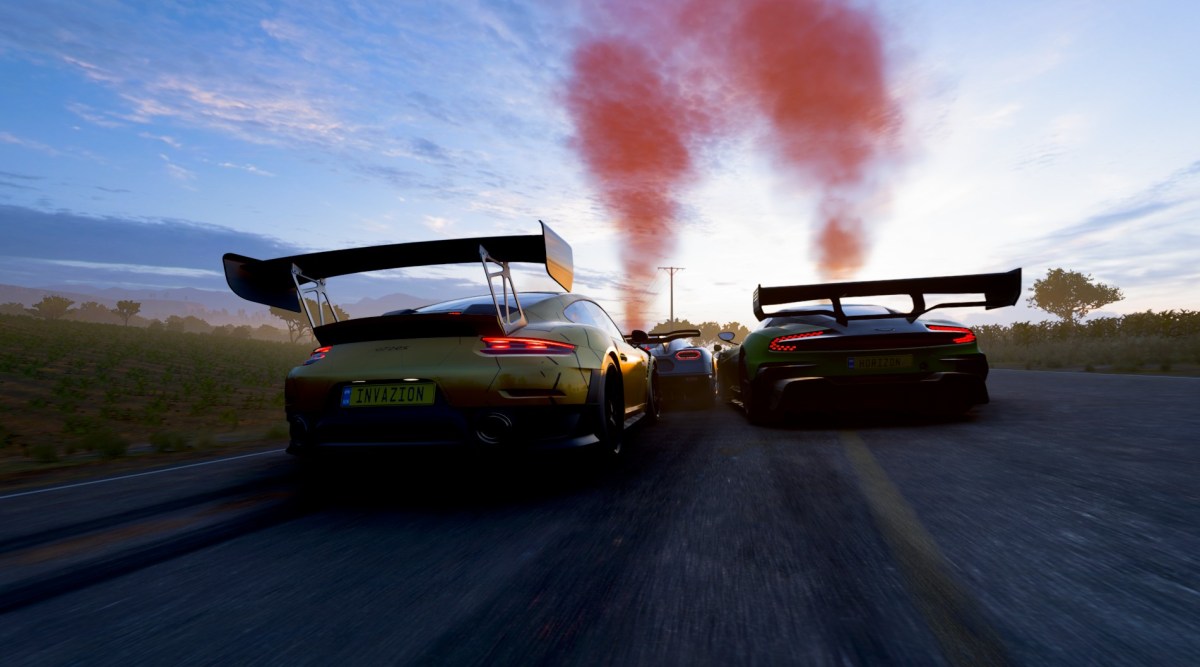
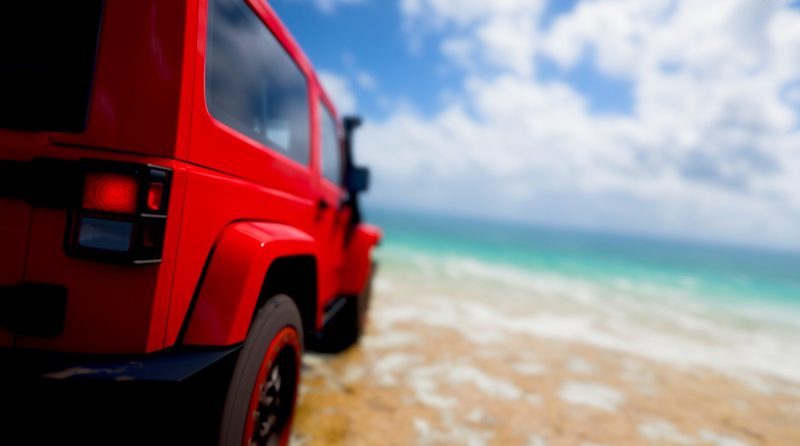

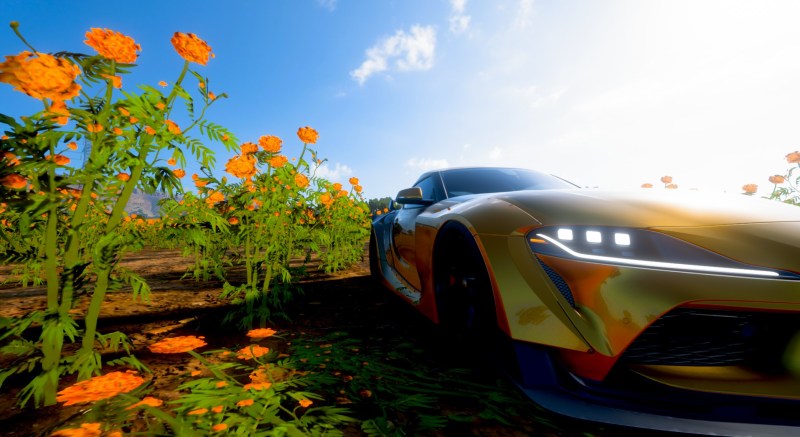
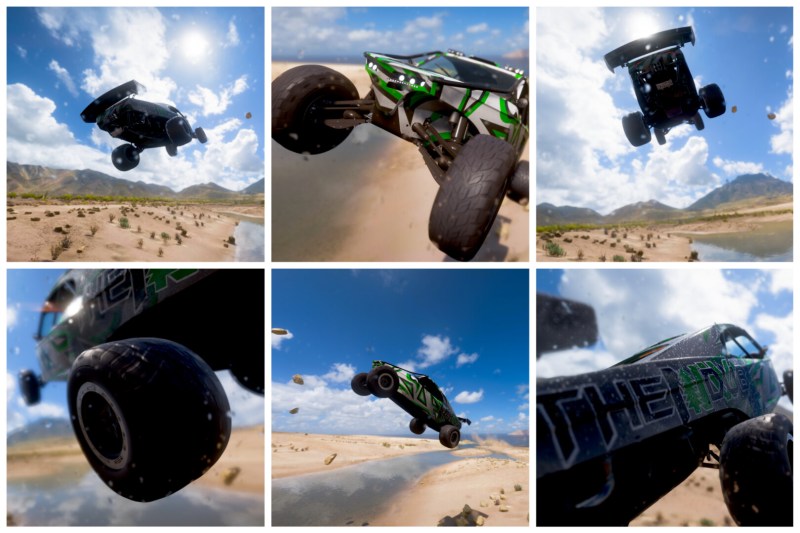
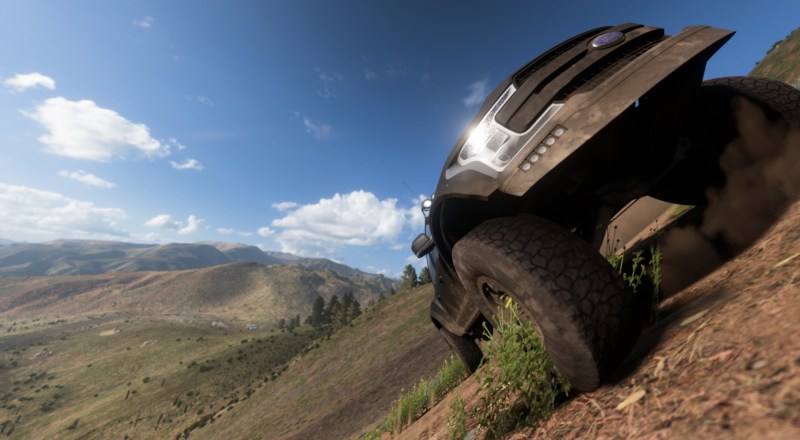
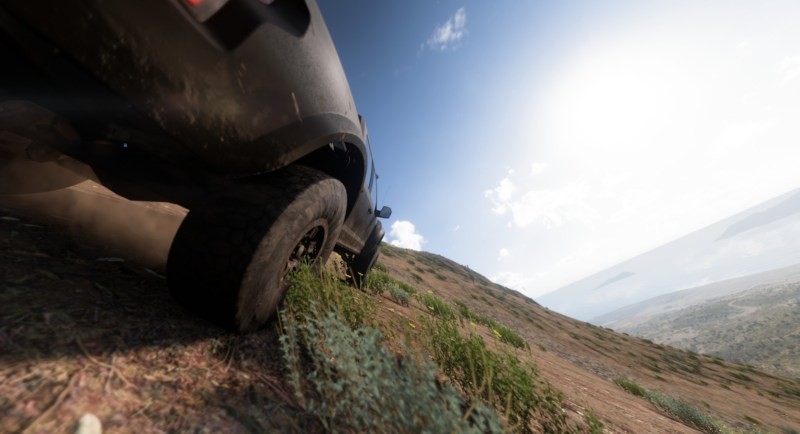
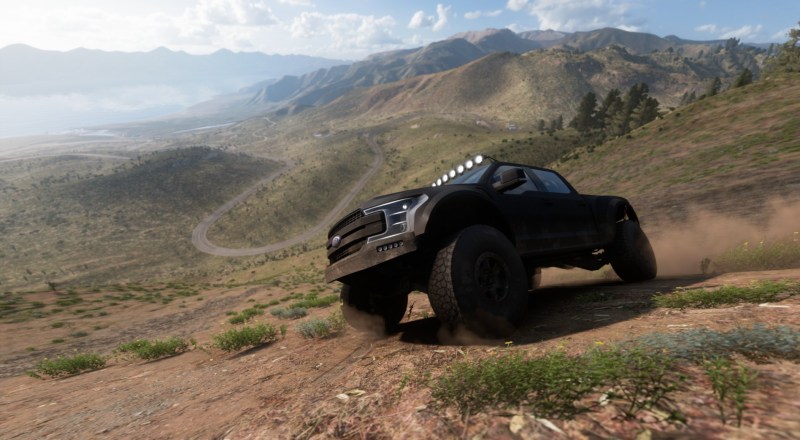





Published: Nov 9, 2021 07:00 am